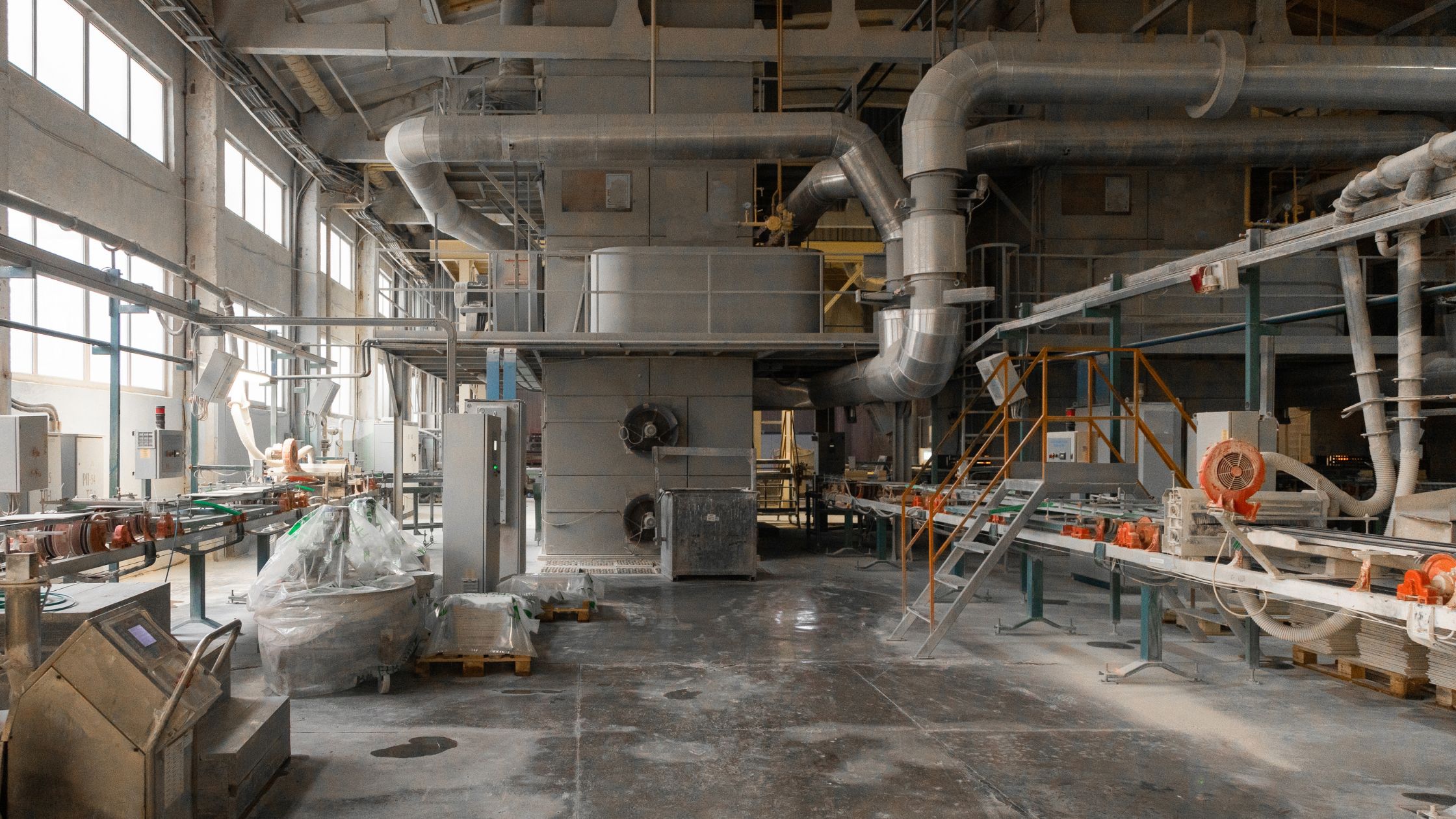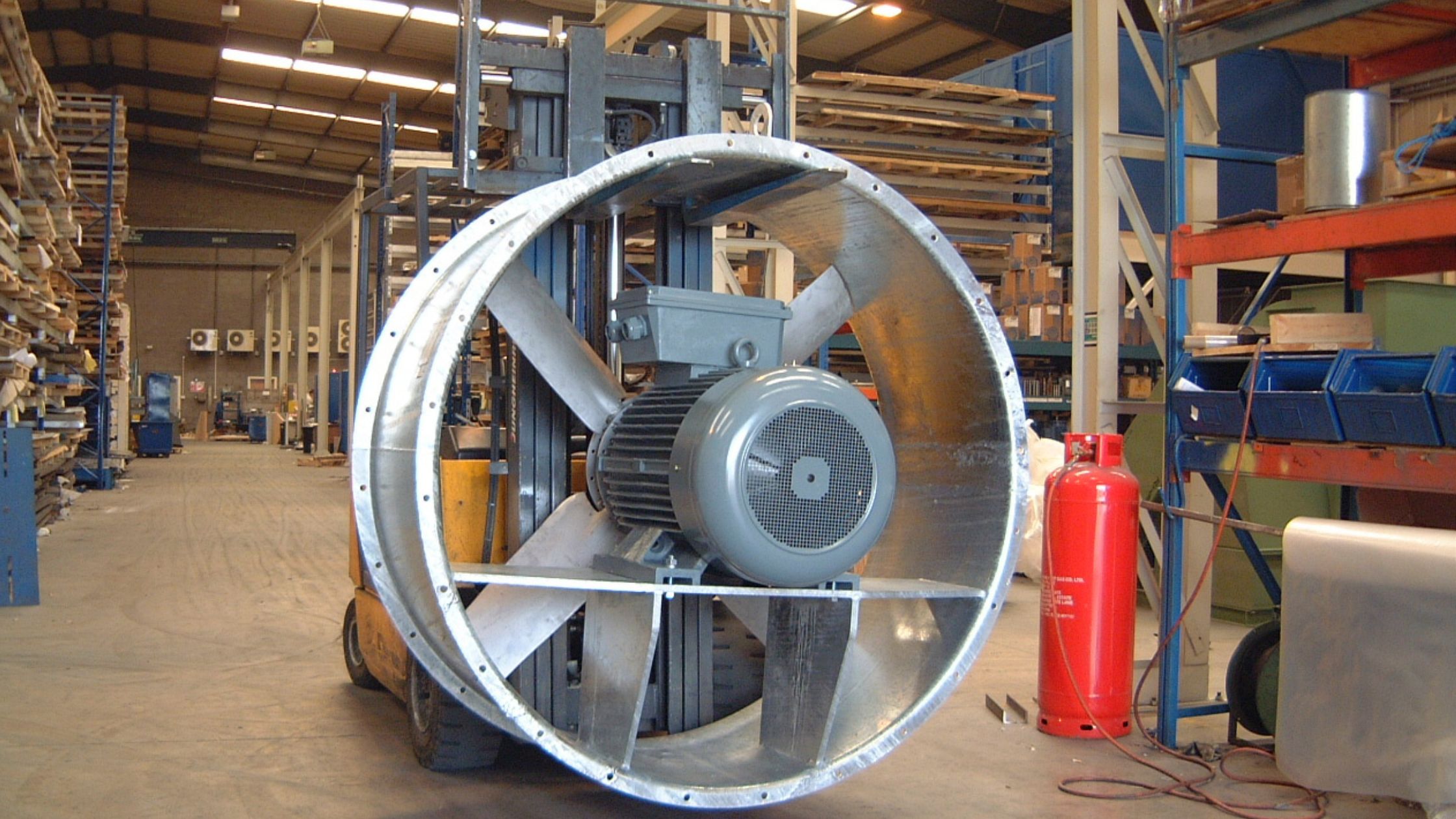
Industrial Fans in the Ceramics Industry
Published on 9 Oct 2025
The ceramics industry relies on accurate temperature and airflow control throughout the whole production process. Industrial fans hold the key to this control in the ceramics sector, guaranteeing product quality, process effectiveness, and a secure working environment during the drying, firing, glazing, and cooling processes. Without them, it would be impossible to maintain stable kiln conditions, extract harmful dust and fumes, or cool ceramic products consistently.
In this article, we’ll explore the role of ceramics industry fans, the types used across different processes, and how RHF Fans provides engineering solutions ideally suited for demanding ceramic applications.
Industrial Fans in the Ceramics Production Process
1. Raw Material Preparation
In the early stages of ceramics manufacturing, crushing, grinding, and mixing generate heavy dust loads which need to be managed. This is accomplished by dust extraction fans for ceramics facilities, which include radial impellers with straight or backwards-curved blades that can handle abrasive particles without clogging. When coupled with cyclones or bag filters, these fans can separate fine dust, protecting both workers and machinery.
High-pressure centrifugal fans are utilised for the pneumatic transportation of silica powders, feldspars, and clays. These are made with sturdy casings and small impeller channels to produce the high static pressure needed to convey dense products through pipelines. Their durable design guarantees dependability even with constant, harsh use.
2. Drying
Centrifugal fans with backward-curved impellers are used for the drying process because they provide high efficiency and stable airflow under varying load conditions and help to prevent cracks before firing. This fan arrangement minimises energy consumption while handling the hot, humid air streams inside spray and tunnel dryers.
Hot gas fans, built from heat-resistant alloys and reinforced shafts, circulate air at temperatures exceeding 300–400°C, ensuring even drying of ceramic bodies. Axial fans deliver large volumes of air at low pressure, so these fans are also employed in the drying process, for example, in tunnel or chamber dryers.
3. Firing
Precision airflow for combustion, heat distribution, and exhaust is required during the firing process. High-temperature centrifugal fans are great here as they feature heat-resistant steel impellers, insulated housings, and extended shafts that protect bearings and motors from radiant heat. The functionality of these fans is important here as they circulate kiln gases reliably over long operating cycles without deformation or imbalance.
Other types of fans used in the firing process include forced draft and induced draft fans. Forced draft fans, which can be either centrifugal or axial, use forward-curved or backward-inclined impellers to deliver controlled combustion air to burners. Induced draft fans, which are usually axial fans, operate at high temperatures and are fitted with radial or backward-curved impellers and reinforced housings. They extract hot flue gases from kilns, maintaining a negative pressure to ensure safe and efficient combustion.
4. Cooling
Post-firing cooling must be gradual and consistent. The aerodynamic blades of cased axial fans move very high volumes of air efficiently, ensuring rapid but even cooling along the tunnel. They are lightweight compared to centrifugal fans, making them energy-efficient for large-scale ventilation.
Vane axial fans are used when more accurate airflow control is required for fragile ceramic objects that are susceptible to thermal shock. Higher pressure capabilities and better cooling regulation are made possible by the guide vanes in their design, which straighten and regulate the airflow.
5. Glazing and Surface Treatment
The glazing and enamelling processes produce overspray, solvents, and volatile organic compounds (VOCs), so fume extraction fans are necessary to support these operations. These fans are constructed from stainless steel or coated with materials that resist corrosion to manage chemically charged air streams. Their impellers are made to limit dust accumulation, which lowers the need for maintenance.
6. Dust and Fume Control
Centrifugal fans are the mainstay of dust-collecting systems throughout the ceramics production. They are ideal for managing abrasive ceramic dust in cyclones, scrubbers, and baghouses due to their heavy-gauge steel construction, open impeller designs, and wear-resistant coatings.
Dust collection fans, typically centrifugal types, are ruggedly built to handle sticky glaze dust without clogging. They are often integrated with baghouses or wet scrubbers to remove particulates, ensuring that work areas remain clean and keep up with health and safety standards.
For environments involving corrosive fumes from coatings, enamels, or binders, chemical-resistant centrifugal fans are used. These may be constructed with fibreglass-reinforced plastics, special coatings, or stainless steel, ensuring durability against chemically aggressive airflows while maintaining reliable extraction performance.

Why RHF Fans Are the Right Choice for the Ceramics Industry
The ceramics industry presents specific challenges for fan design — high temperatures, abrasive dust, and extended operating hours. This is where RHF Fans excels.
RHF engineers every impeller with precision using finite element analysis to predict stresses and deflection on blades, hubs, and welds. This ensures that impellers remain stiff, balanced, and durable under harsh conditions. Each impeller is also precisely engineered with defined mass, centre of gravity, and inertia, allowing accurate shaft, bearing, and drive design.
Unlike many manufacturers, RHF doesn’t just consider the fan bearings; we also calculate motor bearings, shafts, and lubrication intervals to guarantee reliability across the entire system. These checks ensure longer service life and reduced downtime in ceramic plants.
What makes RHF stand out is our use of bespoke software to deliver consistent, optimum engineering solutions for every fan. This results in products that not only meet performance demands but also ensure the reliability and efficiency that ceramic manufacturers depend on.
RHF Fans’ Engineering Confidence
Every stage of production relies on the correct fan technology, from industrial fans for kilns to dust extraction fans in ceramics. RHF Fans manufactures bespoke fans with advanced impeller design, stress analysis, and precision engineering, which meet the needs of the ceramic industry. By combining expert construction with expert engineering software, at RHF Fans, we guarantee reliability and long-term performance.
For ceramic manufacturers, that means peace of mind — and the confidence that production will run smoothly, efficiently, and without interruption. If you need help selecting a new industrial fan for ceramic production, contact our team for more information about our bespoke fans and services.
